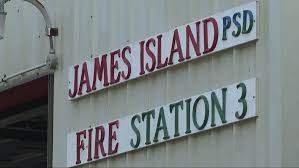A board of arbitrators has handed down a landmark decision that requires the city of Sudbury, Ontario, to add more on-duty personnel at the fire station in its Val Therese community, citing clear health and safety risks linked to deploying fewer than four fire fighters to structure fires.
The award, issued on August 31, also constitutes a significant advance in public safety in the communities served by that station and sends a strong message to urban municipalities across Canada that staffing their firehalls with fewer than four fire fighters on duty puts those who do initially respond at risk.
The arbitration, which stemmed from the Sudbury Professional Fire Fighters Association’s assertion that having only two full-time fire fighters on duty in Val Therese put its members at risk, included 10 days of hearings and evidence from the city and from experts in firefighting and fire fighter safety.
The board accepted that the risk is not only to the two fire fighters on duty, but also to later-arriving fire fighters, because a fire will grow exponentially larger and more dangerous with fewer personnel available on scene to combat it during its early stages.
The final award orders Sudbury to increase the number of fire fighters on duty at all times in Val Therese from two to four, the same level of resource as its four other full-time stations. Val Therese is the only full-time station in an area of several communities with a population of 22,300. Its full-time fire fighters rely on backup from part-time fire fighters to respond to emergencies.
The city’s position that it is safe to staff the Val Therese hall with only two fire fighters “runs counter to the ‘best practice’ approach taken across North America for career personnel and the one adopted by virtually every comparable municipality in the province,” the award reads.
Sudbury Professional Fire Fighters Association Local 527 President Mark Gobbo welcomed the award and said he was extremely pleased the panel recognized the health and safety risks associated with sub-four staffing. “Our members in Val Therese will be safer with four on duty to respond, and so will the public. It’s a win-win.” Gobbo credits the important ruling to the persistence of successive Sudbury Local 527 Executive Board members, who pursued the issues over many years.
IAFF 13th District Vice President Fred LeBlanc hailed the award an important milestone in fire fighter health and safety in Sudbury that would hopefully resonate across Canada. “Many Canadian cities keep four or more fire fighters on duty in their full-time firehalls. But to those that don’t, this award sends a clear message that they are jeopardizing the safety of those who are trusted to keep others safe,” LeBlanc says. “Providing a minimum of four personnel on duty in urban areas is also a key component of public safety, because it enables search and rescue immediately upon arrival. It just makes sense on every level.”
Testimony during the Sudbury hearings focused on applicable standards, when flashover occurs, the flammability of modern building materials and home contents and the moral dilemma fire fighters face when they have to wait outside a burning structure where people are trapped because fewer than four personnel are on scene.
When fewer than four fire fighters are on duty, they cannot safely enter a burning home, according to accepted health and safety standards and laws governing the profession. Fire fighters must enter a burning structure in teams of two, with two other fire fighters outside who remain in constant contact with those inside and who are prepared to rescue them if they become trapped.
Sudbury is one of many Canadian cities with sub-four staffing in full-time firehalls. Another example is Charlottetown, PEI, which has a population of 36,000 but often has only one full-time fire fighter on duty, and never more than three. Charlottetown fire fighters can never safely initiate interior search and rescue when they first arrive on the scene of a fire.
The Sudbury award is consistent with science-based international standards, including National Fire Protection Association (NFPA) 1500, which addresses fire fighters’ occupational health and safety, and NFPA 1710, which addresses fire fighter deployment in urban areas.
Former IAFF Assistant to the General President Dr. Lori Moore-Merrell gave expert testimony on behalf of Sudbury fire fighters, who were represented by IAFF Canadian Legal Counsel Sean McManus.



